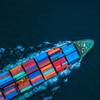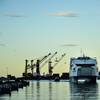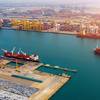Admiral Explains 3D Printing is Additive Manufacturing
Vice Adm. Phillip Cullom
Chief of Fleet Readiness & Logistics, lead coordinator on the Navy's additive manufacturing efforts, explains for those new to 3D printing why the Navy is interested in this technology, and what it is already contributing.
1. Saving Money and Time
Norfolk Naval Shipyard’s Rapid Prototype Lab is saving the Navy thousands of dollars on the Gerald R. Ford-class of aircraft carriers. Instead of traditional wood or metal mockups of ship alterations, which help to prevent expensive rework, the lab prints much cheaper plastic polymer models – in hours, rather than days or weeks. Now all four Navy shipyards have 3D printers working on similar, and other, ways to benefit the Navy.
2. Innovative
The Navy’s Fleet Readiness Center Southeast took advantage of the ability to work with more complicated designs and unique material properties to develop an enhanced hydraulic intake manifold for the V-22 Osprey. This manifold is 70 percent lighter, improves fluid flow, and has fewer leak points than its traditionally manufactured counterpart.
3. Customizable
Walter Reed National Military Medical Center uses additive manufacturing processes to meet a range of medical needs and delivers personalized patient care. Taking advantage of the ease of customizing 3D-printed parts, WRNNMC produces items including tailor-made cranial plate implants, medical tooling, and surgical guides.
4. Overcoming Obsolescence
The circuit card clip for J-6000 Tactical Support System Servers, installed onboard Los Angeles-class nuclear-powered guided-missile submarines and Ohio-class nuclear-powered guided-missile submarines is no longer produced by its original manufacturer. Naval Undersea Warfare Center-Keyport used additive manufacturing to create a supply of replacement parts to keep the Fleet ready.
5. Demonstrating the Potential to Increase Fleet Readiness Even Further
The CNO’s Rapid Innovation Cell Print the Fleet project installed a 3D printer aboard USS Essex this year, demonstrating the ability to develop and print a variety of shipboard items, from oil reservoir caps and deck drain covers to training aids and tools.











